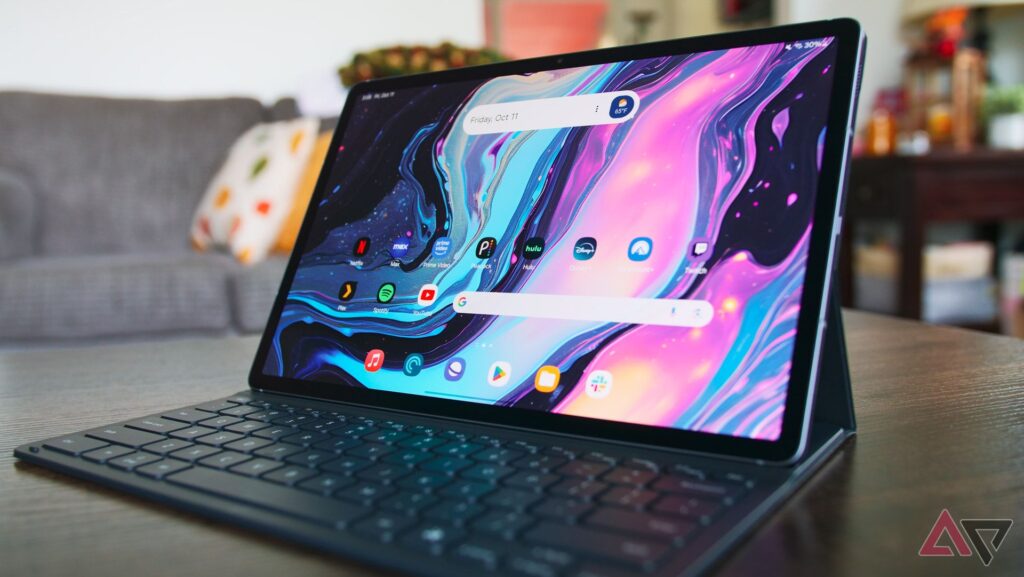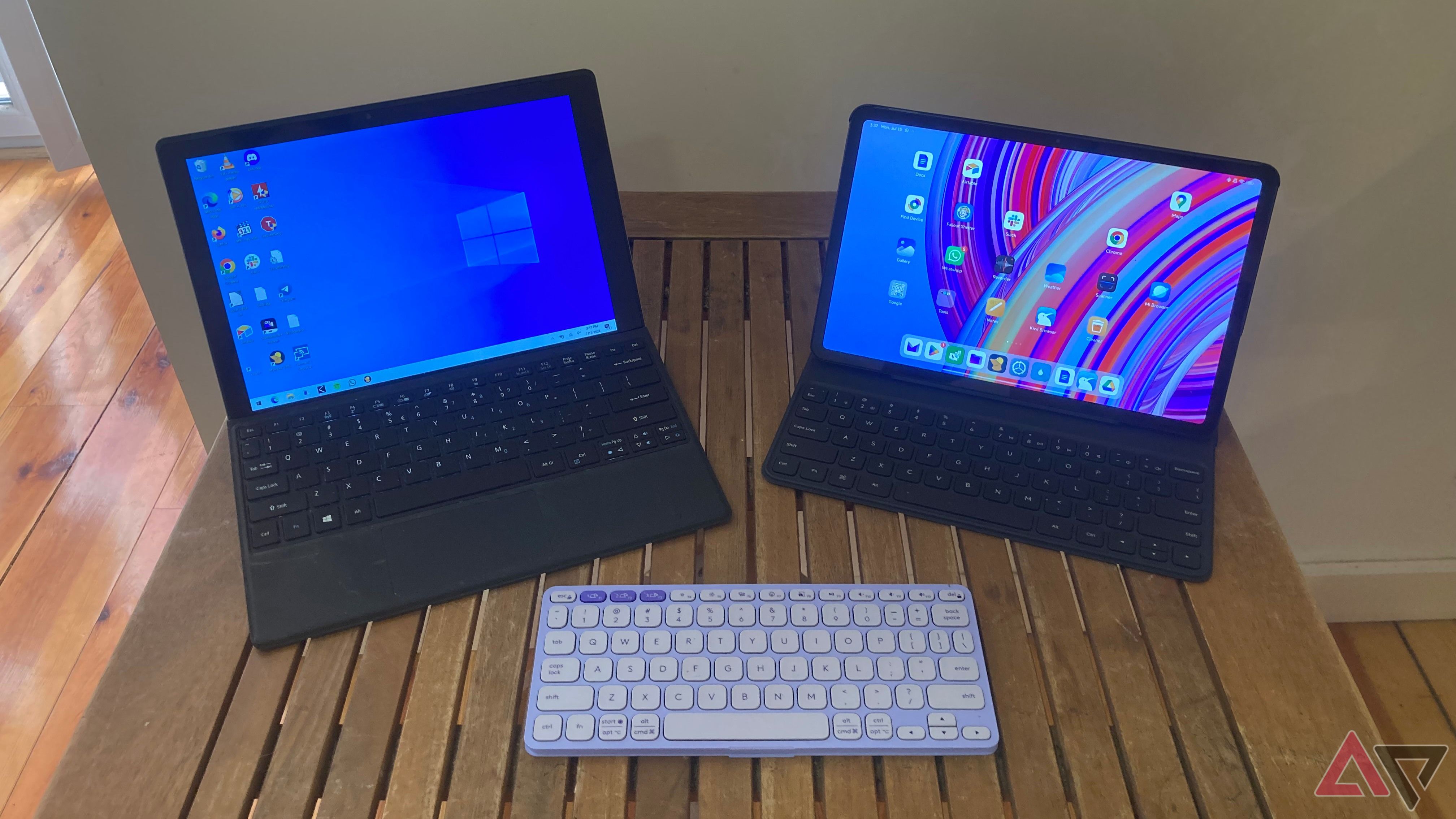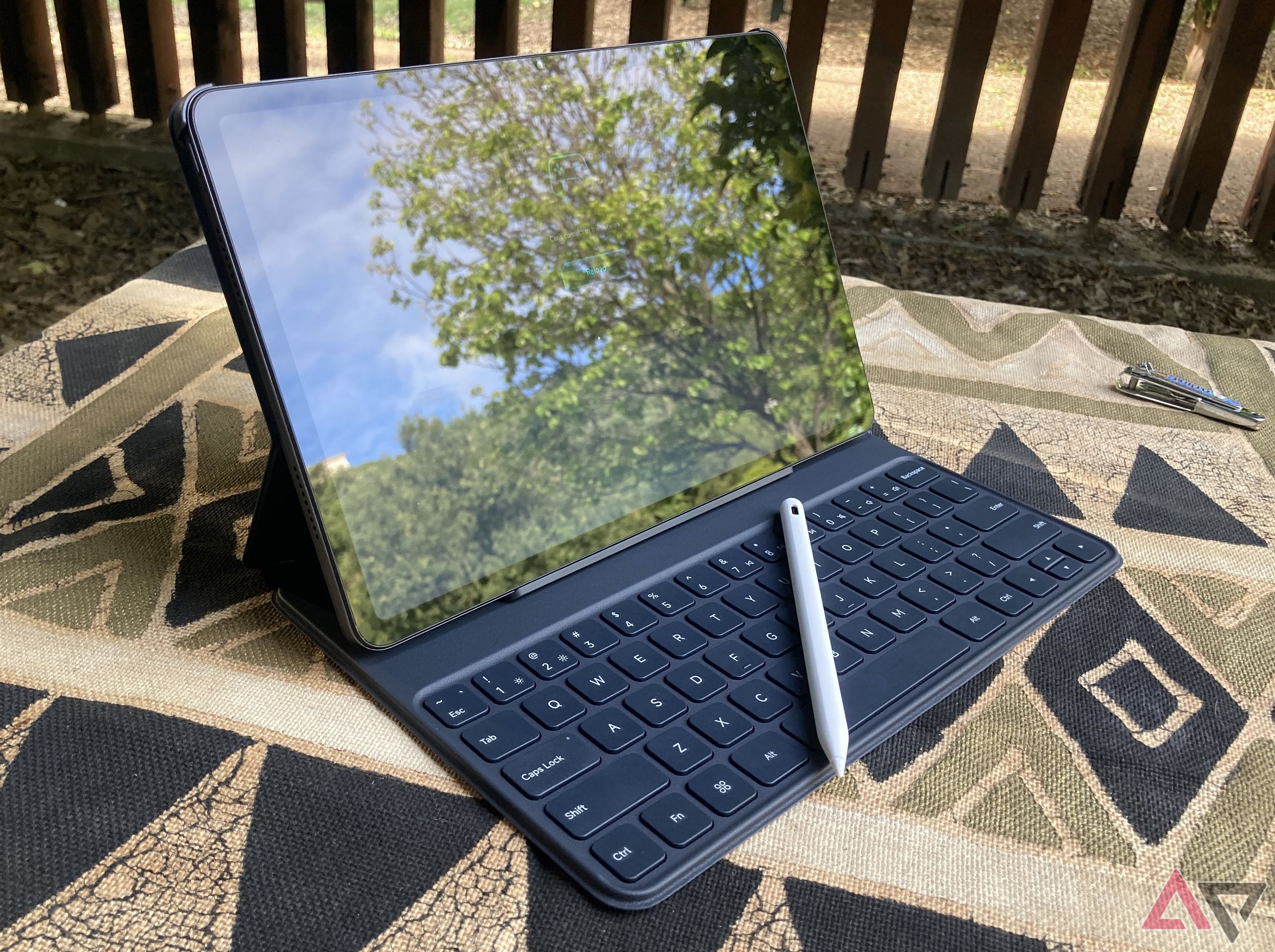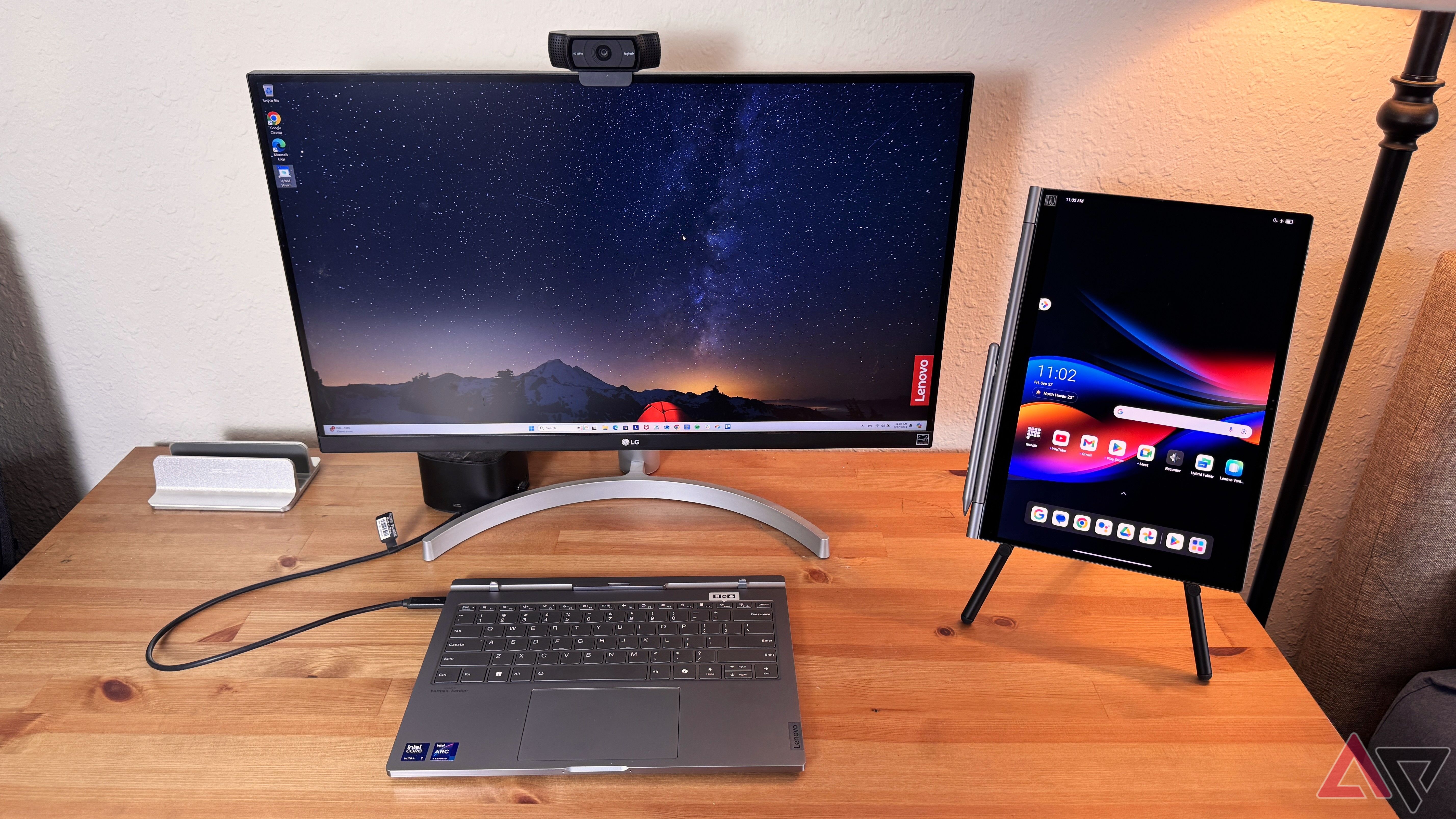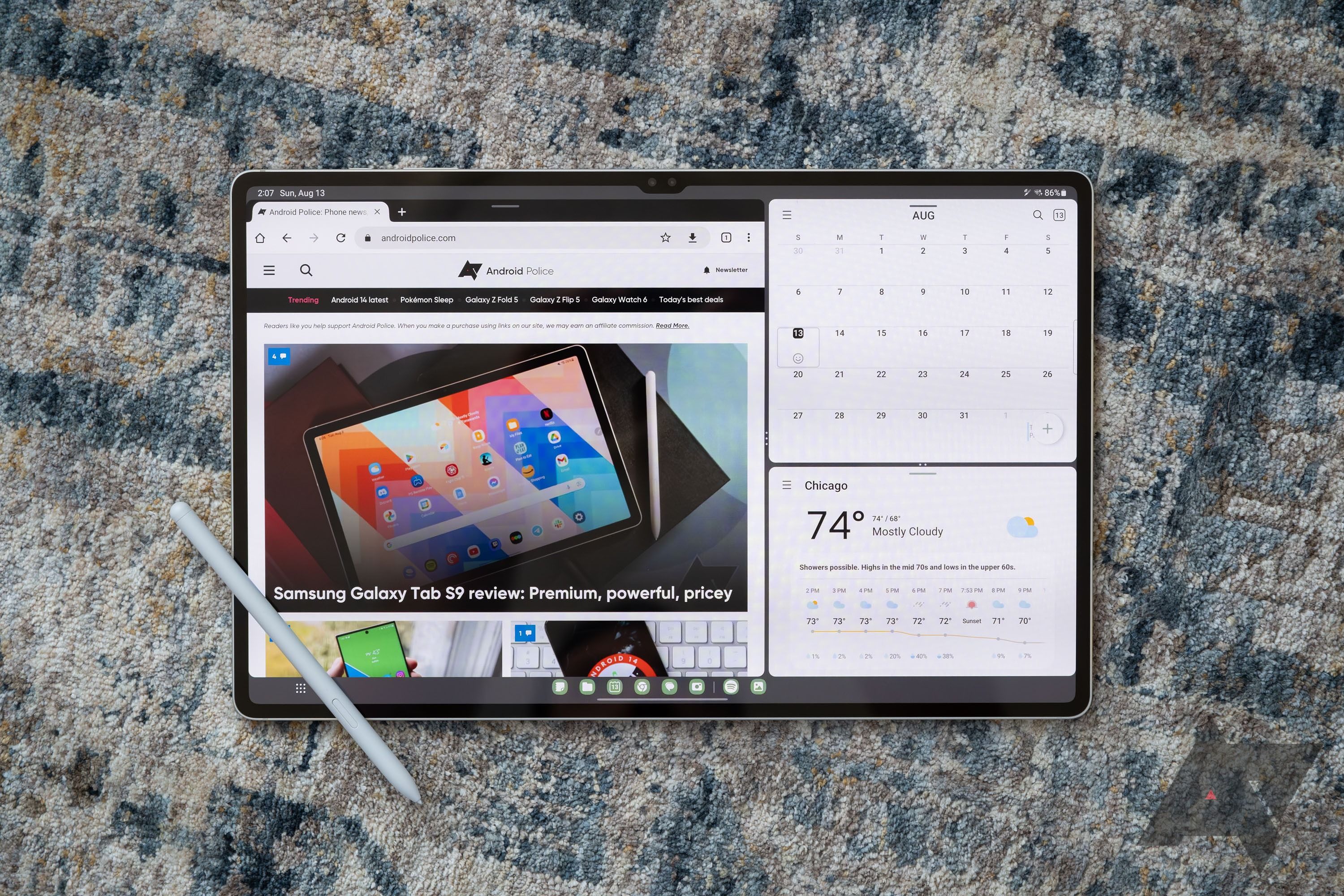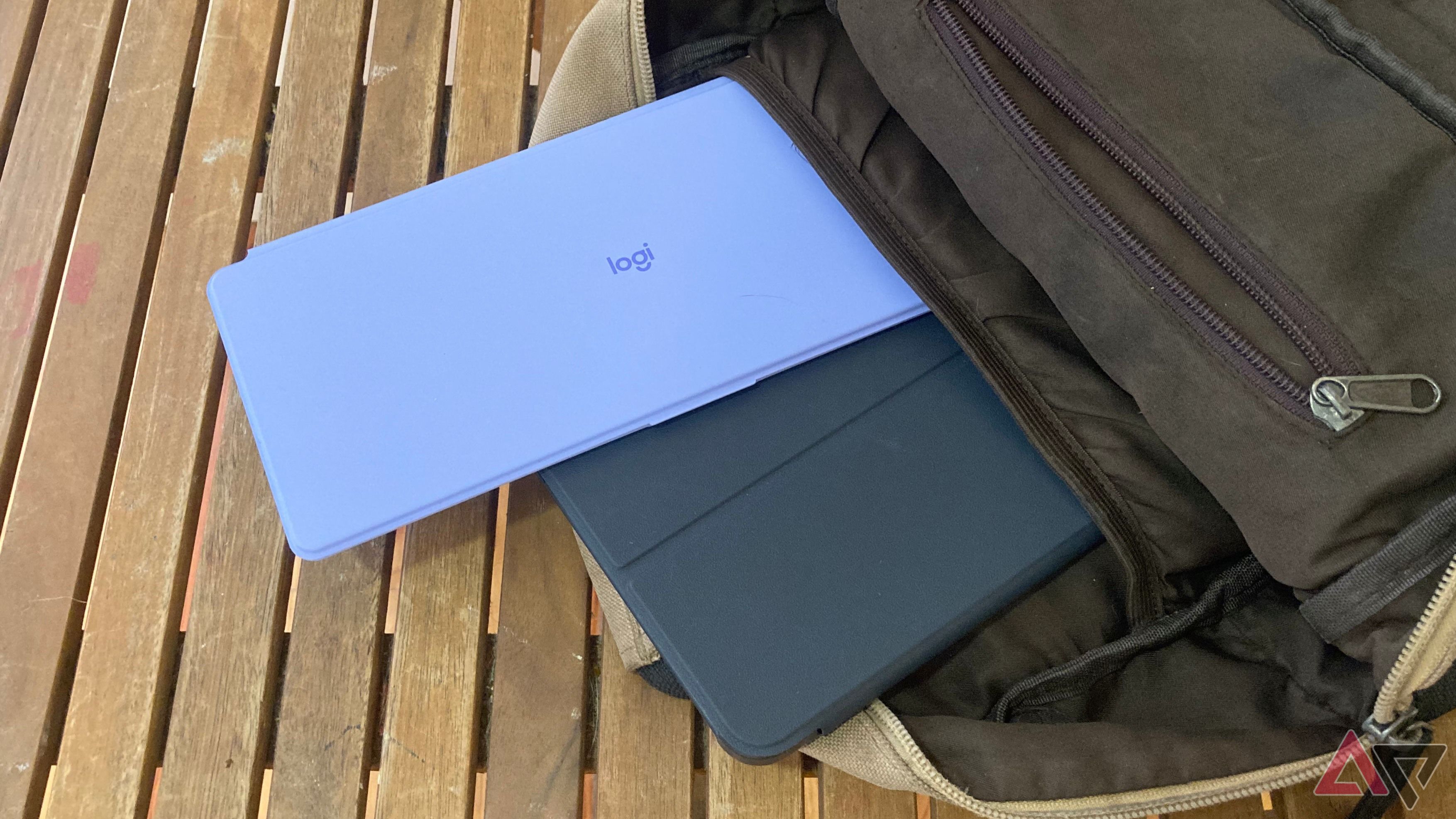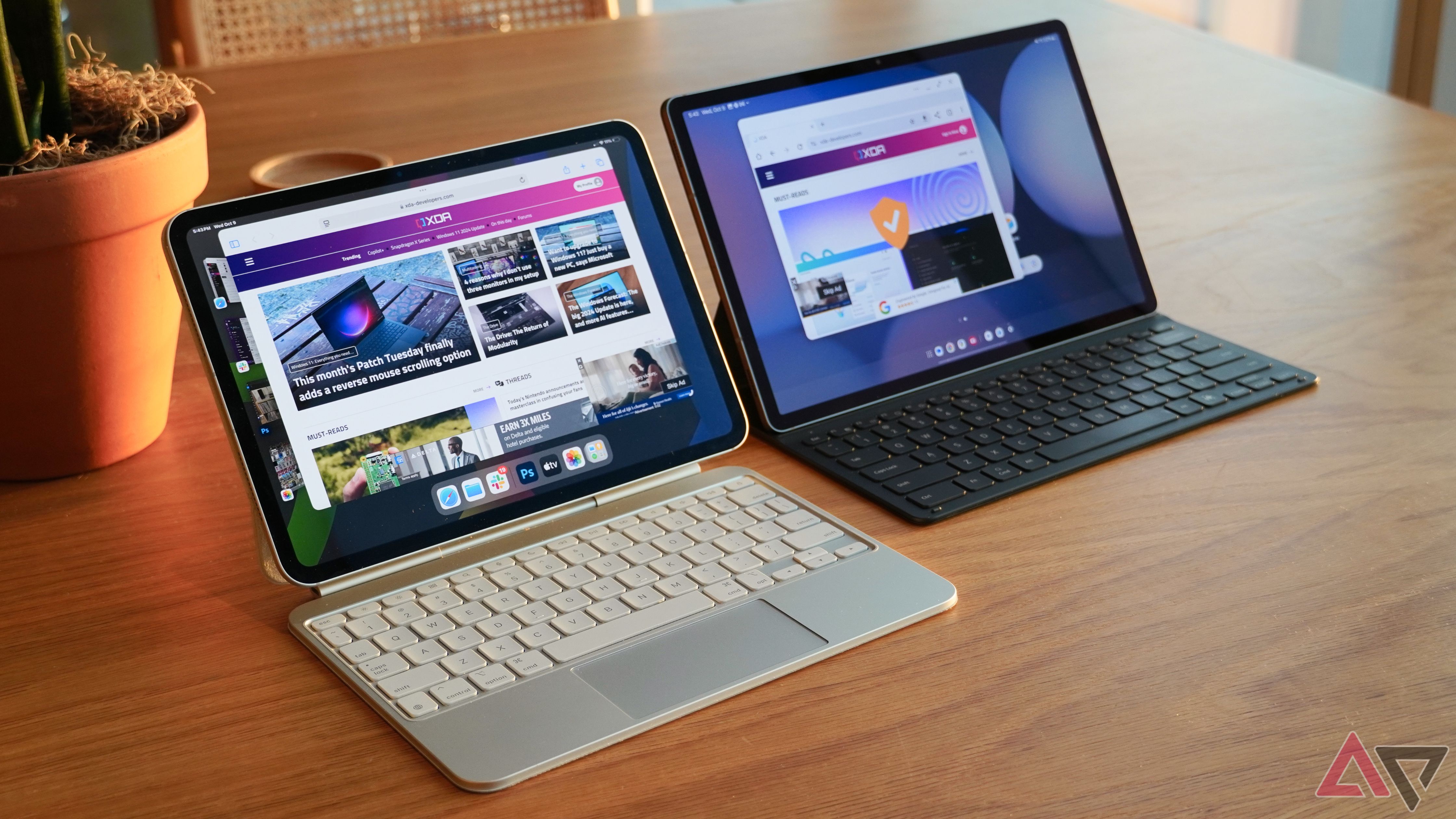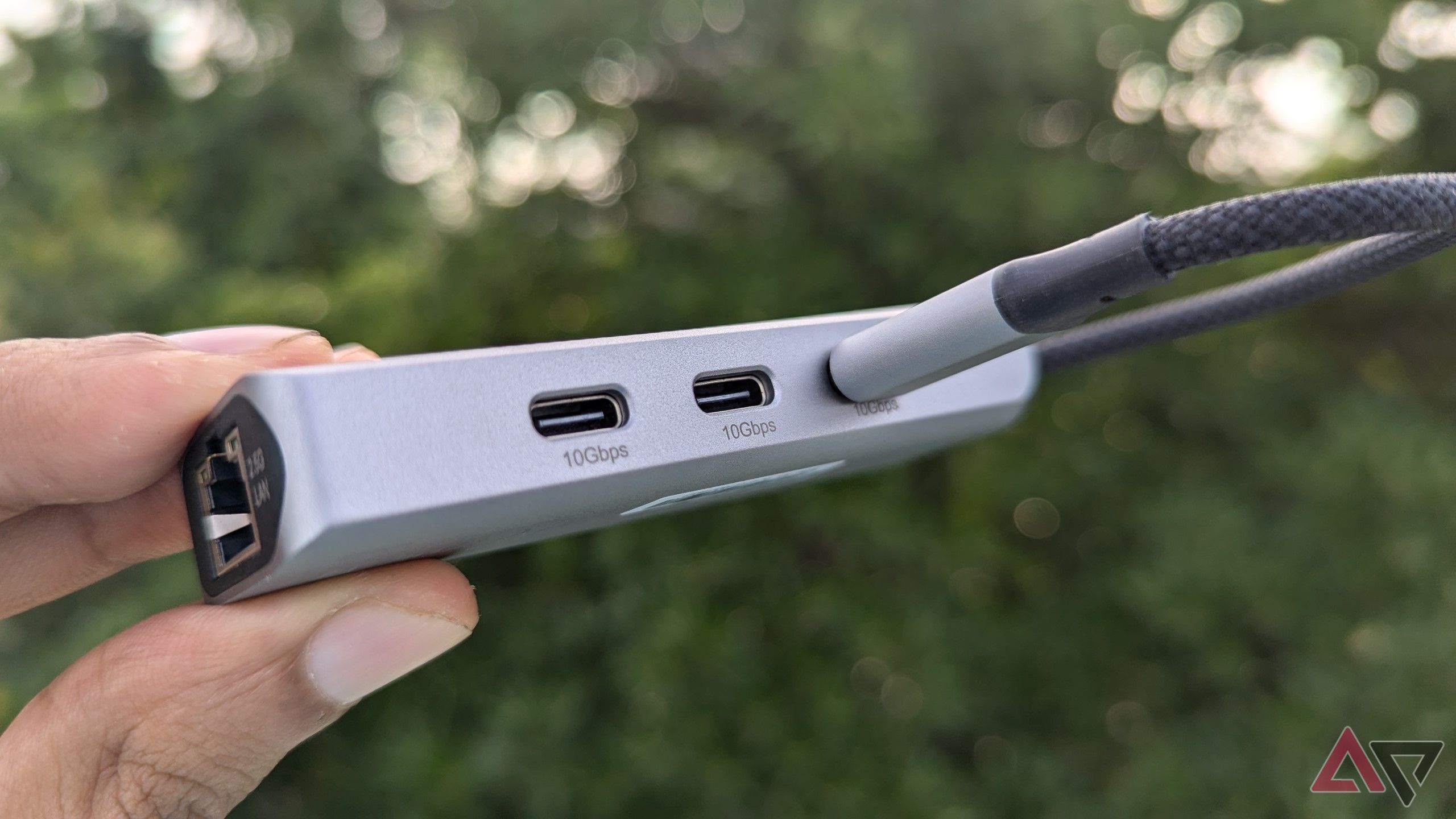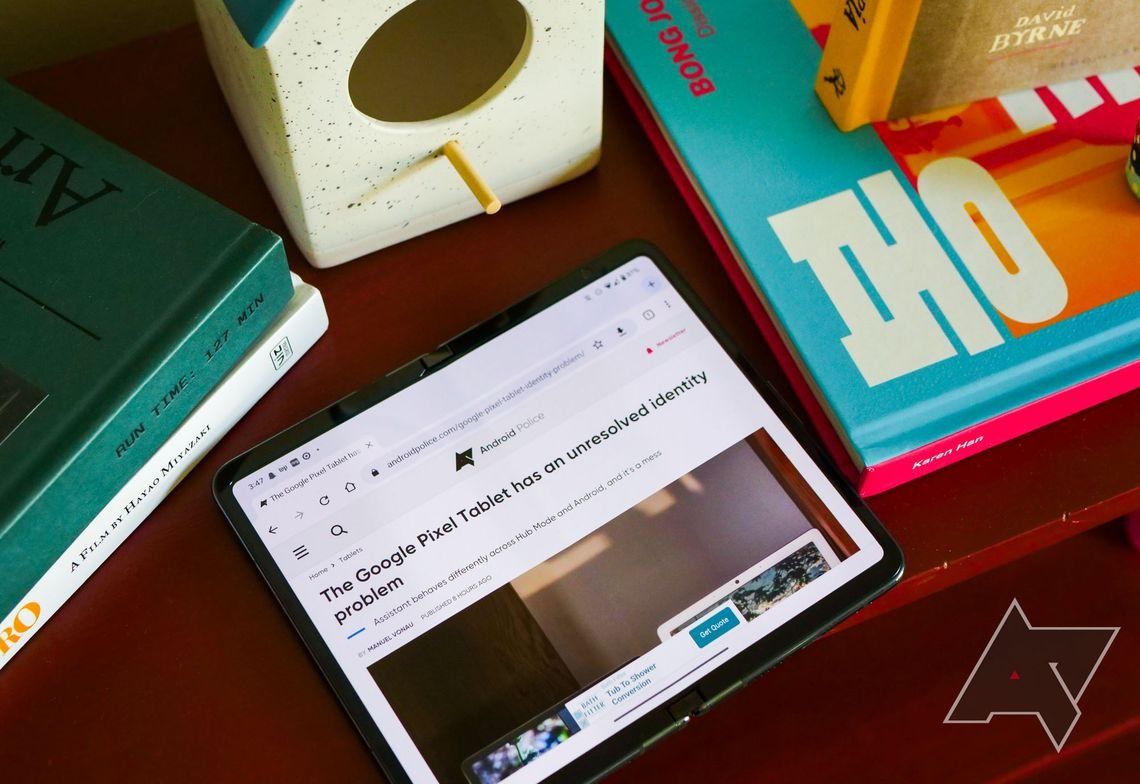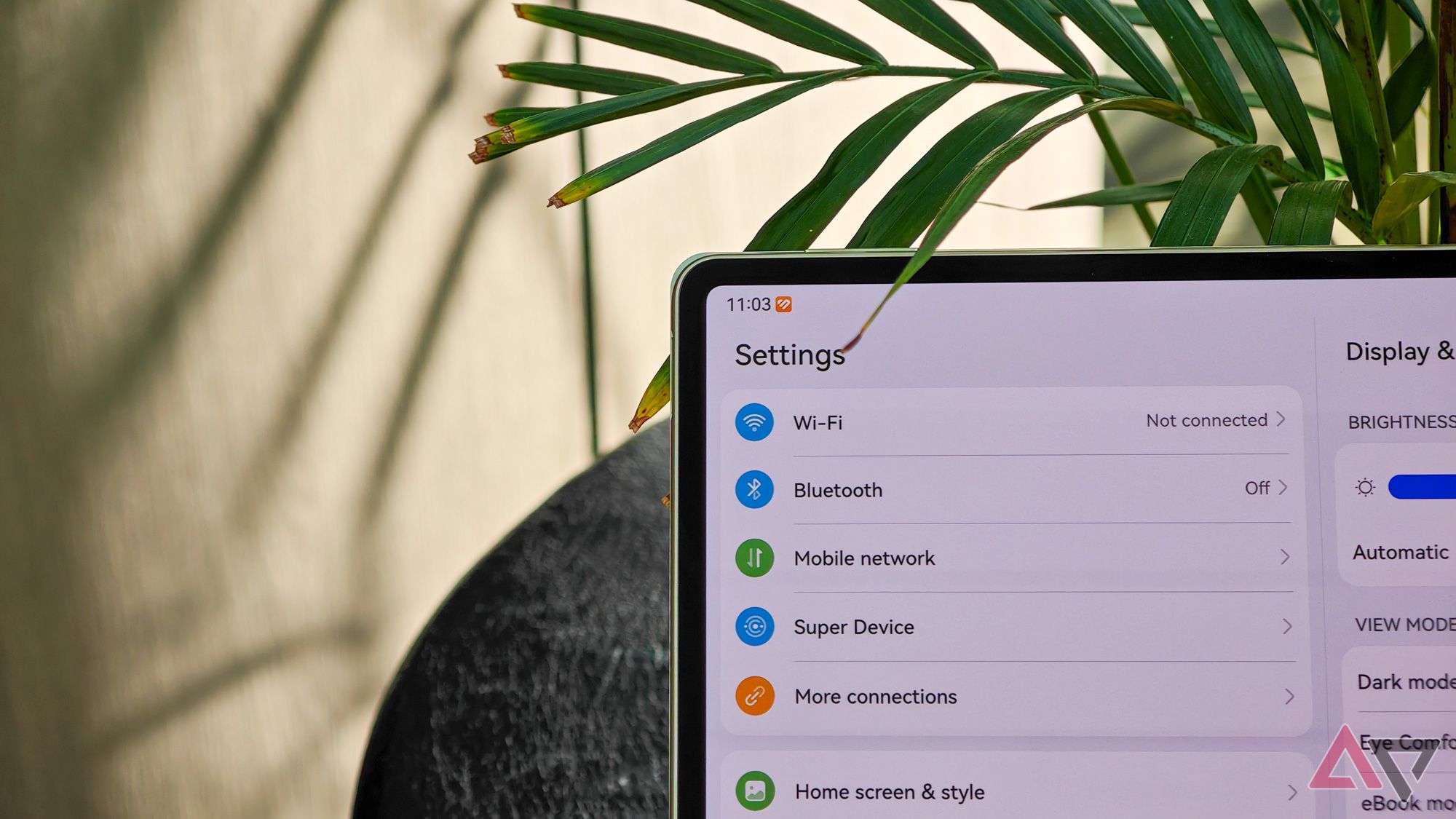Nearly 30 years later, I’m a Windows expert, but modern laptops are wide. I love my 16-inch LG Gram, but it’s been gathering dust for a few months now. Its bulk will hardly fit on a coffee shop table, and it will probably break if stuffed into an overnight backpack. Inspired by the resurgence of Android tablets, I incorporated the Redmi Pad Pro (today’s best sub-$300 tablet) into my productivity routine, and it worked. Now, to my fellow minimalists, I encourage you to consider a medium-sized slate as a laptop replacement. A few small trade-offs result in a relatively low-cost setup.
Re-evolution from tablet to laptop
What exactly is a computer?
Acer on the left, Redmi on the right.
I started my writing career on an Acer Switch Alpha 12 many years ago. The once powerful 12-inch Windows Surface Pro 3 clone for $500 is now almost obsolete. It has a spicy, expanding battery and a dual-core CPU that can boil water. It sat in my closet for years until last year when I came across it to help me create a weekend menu for a group outing. I once again realized the convenience of touch panel operation.
Most tablets and their Android implementations aren’t designed for full-time writing, deep research, and other tasks that laptops are good at. Nevertheless, tablets’ portable nature and increased power and efficiency make them better than ever as an alternative to the bulky, power-hungry Windows clamshell.
Android pseudo-laptops are economical
While Windows is great for resource-intensive tasks, the tablet’s all-in-one design makes it more versatile. A new, high-performance midrange Windows laptop can cost more than $1,000. A small $500 tablet allows you to multitask across the screen and a secondary monitor (given the right workload) without breaking a sweat.
The Redmi Pad Pro I’m writing this on costs about $260 on Amazon, and it lets you stack tabs, switch apps, and install software. Perhaps the Snapdragon 8 Gen 3 system-on-chip will provide the blistering speeds users demand. However, the SD 7s Gen 2 (essentially an overclocked 6 Gen 1) provides all the horsepower you need for tasks other than compiling dense code and rendering 3D graphics.
Competitors like the Exynos 1380-powered Galaxy Tab S9 FE offer similar performance. The Pixel Tablet offers great performance and is commonly available, while the Galaxy Tab A9+ boasts Samsung’s interface. Nothing can achieve the price/performance ratio of the Redmi Pad Pro at the MSRP (although discounts are often available). But there are options.
Challenges of using tablets for all purposes
Think of the learning curve, not the drawbacks
A tablet that does all the work.
Windows requires extensive customization to run properly. Remove unnecessary services, set essential background apps, learn keyboard shortcuts, and an endless selection of word processing, video scraping, photo editing, and other software that works great on power-hungry x86 machines. you need to walk around.
It takes less effort to customize Android to your liking. My biggest challenge was getting used to the general interface. Not Windows or Android smartphones. Landscape orientation and focus on heavy reading and word processing requires a different implementation than the taller, skinnier handheld Android. After years of trying to use a tablet for anything substantial, this longtime Windows user has been impressed by Android’s maturity as a tablet OS.
How I turned my tablet into a de facto laptop
A little tweaking goes a long way. Some issues need immediate attention, and as we look forward to Android 15 and HyperOS 2.0, we’ll be pulling out more tricks. Here’s a shortlist of steps to streamline your Android tablet and bring it closer to laptop productivity levels.
First, get a suitable tablet
At 15.6 inches, the Galaxy Tab S9 Ultra is overkill for almost everyone.
Size is the first specification to consider. Most people have a hard time digging into laptop-style workloads smaller than 11 inches. On the other hand, minimalist travelers who work in tight spaces may especially prefer smaller tablets. There aren’t many tablets smaller than 9 inches, and existing tablets tend to be a bit slow in performance.
Budget always comes into play, but do your best not to skimp on RAM. Although Android is a lightweight OS, memory requirements can quickly increase when you multitask or switch between tabs. I noticed a difference after upgrading from 6GB to 8GB Redmi Pad Pro, and I am collecting tabs like stamps. Patient users can probably tolerate 4GB. Still, if you’re in the midrange market or are a remote worker whose workload isn’t technical or resource-intensive, 6GB is a good goal.
Carefully consider your planned use case. High peak brightness lets you work outdoors, durable build suits harsh environments, 5G connectivity replaces your phone’s hotspot, and high-end SoC enables resource-intensive workloads It will be. Software plays a huge role, as an update-hungry brand like Lenovo will never have the features of an acclaimed and long-updated interface like Samsung’s One UI.
High-precision stylus technology allows you to draw and take notes. However, some manufacturers limit users to OEM pens only (such as Xiaomi), while others use laminated screens that create a visible gap between the stylus tip and the display panel. Whatever you do, don’t ignore battery life.
find a good keyboard
Logitech’s sleek new keyboard is hidden away.
A high-quality Android-compatible keyboard is essential for laptop simulation. The keyboard on my Acer Windows tablet was terrible, so anything is better than that and the quality varies. The $80 MSRP is a lot, but you can’t beat the slim and lightweight Logitech Keys-to-Go 2. It is highly responsive and supports fast input.
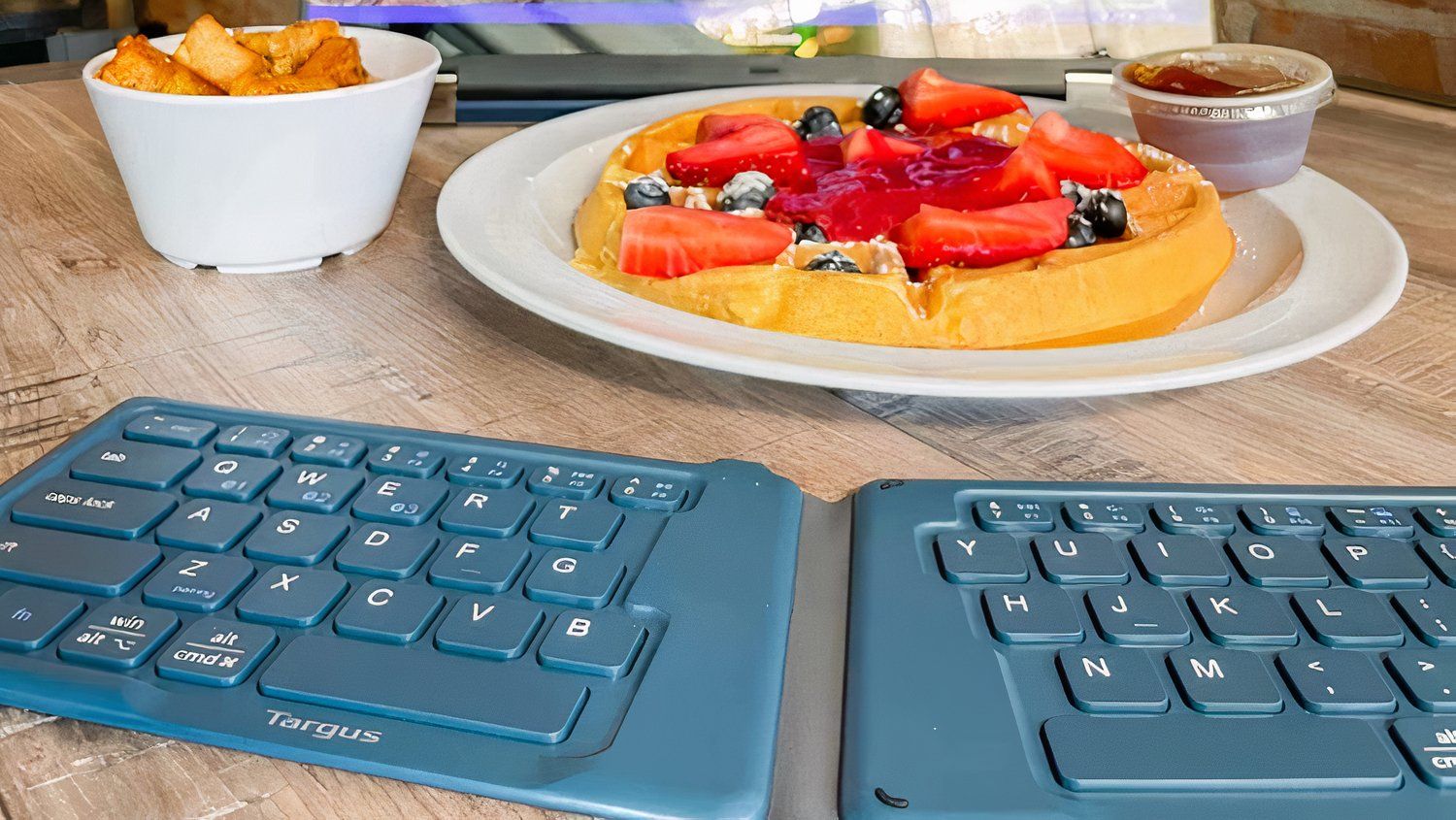
related
5 cool keyboards to take your Android productivity to the next level
These keyboards are so cool you’ll actually want to use them
Plugable’s folding keyboard is also great and cheaper than Logitech’s. Targus and ProtoArc also make good ones. The Artek ones are fine, but avoid the cheapest models. My colleague Chandraveer loves the Lofree Flow mechanical keyboard. This is portable enough to carry around. You can find tons of cheap keyboards from unknown companies on Amazon. They’re not great, but they work to some extent.
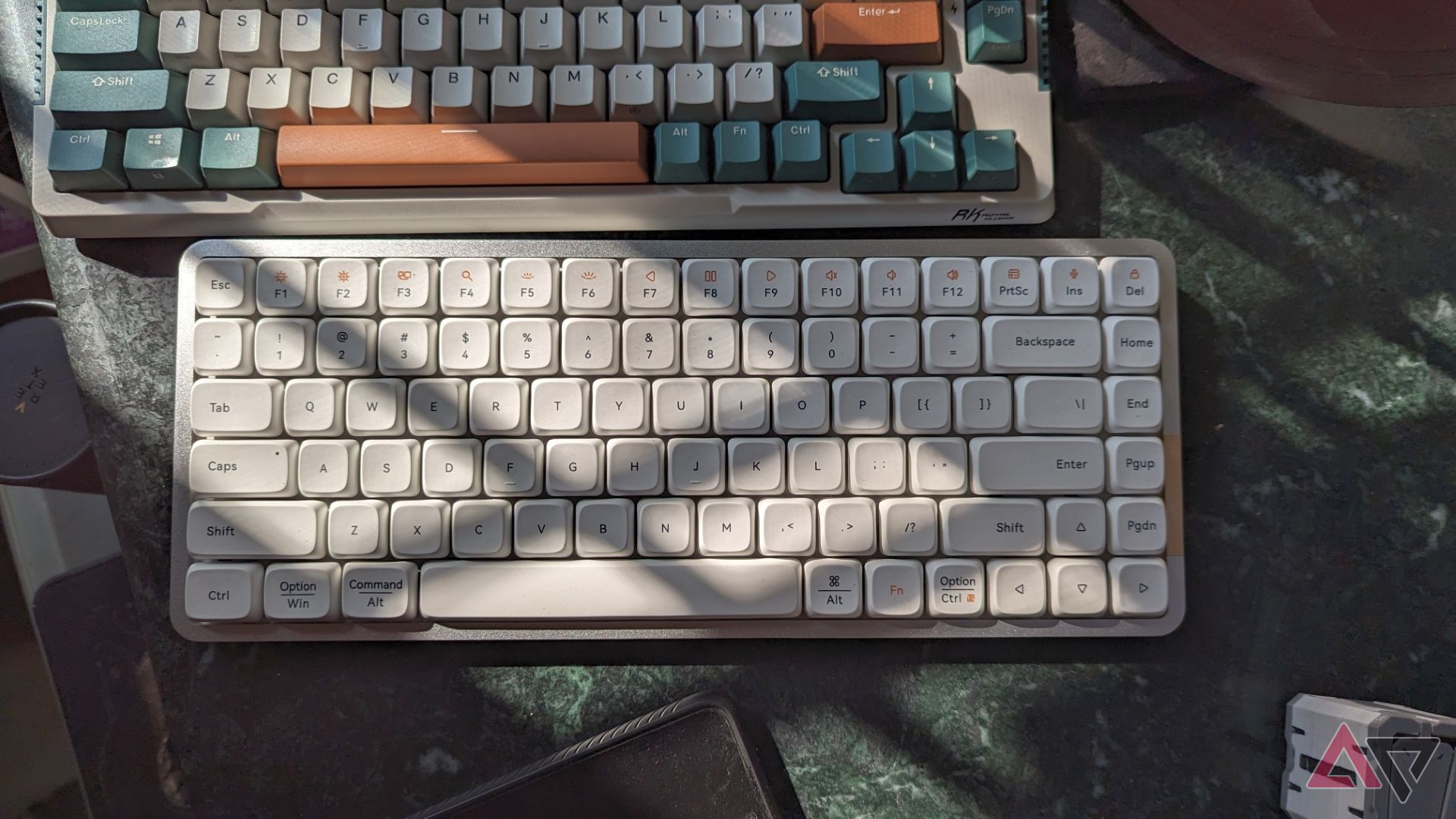
Read reviews
Lofree Flow Mechanical Keyboard: Small height, big thickness
A new benchmark for low-profile mechanical keyboard sound and feel
Please select the appropriate case
Portability, robustness, and ergonomics will determine which case you need. First-party keyboard folios are usually the most laptop-like. I replaced the OEM Redmi Pad Pro keyboard case with a combination folio case and Logitech Keys-to-Go 2. Dexnor and Doqo make high-end Samsung Galaxy Tab keyboard cases with cantilevered standing hinges for comfortable viewing. SaharaCase keyboard folios have rugged construction, typically include trackpads, and support some popular non-Samsung tablets.
iPad Pro M4 and Galaxy Tab S10+ with OEM keyboard.
Low-cost suppliers like Moko, Fintie, and Kuroko sell affordable universal keyboard cases. It’s a standard folio case, but with more space inside and a fixture to secure the included Bluetooth keyboard. There are also a number of sturdy cases available from brands such as Supcase. Also pay attention to the quality of the hinge, which contributes to ease of use. In most cases, there are two or three angles to choose from.
You can also pair a simple sleeve with a reliable tablet stand. The best ones are designed with healthy ergonomics, but they don’t come cheap. If it can hold your tablet in a high position, it should be of high quality.
Let’s consider the mouse
Not everyone can get used to touch navigation, especially with large or fast-paced workloads. Also, aftermarket touchpads are usually not as accurate or premium. Given the streamlined and portable design of tablets, most people prefer Bluetooth mice, especially now that connectivity is stable and latency is low. If you don’t care about a mouse but want the option, use your Android phone as a trackpad or keyboard in a pinch.
Add a versatile USB-C hub
Having just one USB-C port on your tablet makes using wired or plug-in peripherals a hassle. A reliable USB-C hub changes that, expanding functionality to support USB-A devices, full-size display plugs, SD and microSD cards, and more. Requires pass-through USB-C charging and a capable charger that matches or exceeds the dongle’s wattage rating (including power to run the hub).
Not all tablets support advanced features such as DisplayPort over USB-C. Support for most USB hub connector types is built into Android.
Scaling and adjusting the size of icons, text, and other UI components
Foldable has sparked new interest in tablet apps.
Android’s simplified touch interface maximizes readability and convenience, not screen space. To get important work done on your tablet, experiment with display scaling and other resizing options until you find a combination that works for you. Settings vary by Android implementation, but are usually easy to find and change.

related
Android 15 may include a desktop mode, but what is it for?
Mobile phones have not yet replaced computers
Choose a browser that supports persistent desktop site requests
To avoid the hassle of mobile sites on 12-inch landscape screens, use a browser with a persistent request desktop site setting. Chrome has one feature, but Vivaldi allows for even more customization. I prefer Kiwi Browser’s bottom address bar implementation over Vivaldi’s. Firefox for Android lacks the important desktop site request toggle feature, and it’s a hassle to enable it every time you start the browser.
Check settings and enable developer options
Developer options give tablet users more control. One reason for this is that Android has always been phone-centric. My first change is to always cut the animation to 0.5x scale. No need to spend hours moving windows, zooming apps, or navigating your home screen. The shorter the animation, the faster the experience will feel.
Reduce carrying weight and reduce bulk
Android tablets as laptops have a real future
There are some things you can’t or won’t do on a tablet, such as running x86 software without very difficult emulation. Remote workers, frequent travelers, and card-toting minimalists like me can easily type documents, research important topics, and play a growing number of fun games.
A decent Android tablet can do all of this and cost less than a relatively fast laptop. Android tablets run smoother and take up less space in your backpack than many of today’s best Chromebooks. If you’ve ever wanted to disconnect from your wall charger and go out without losing access to your digital life, now is the time.


